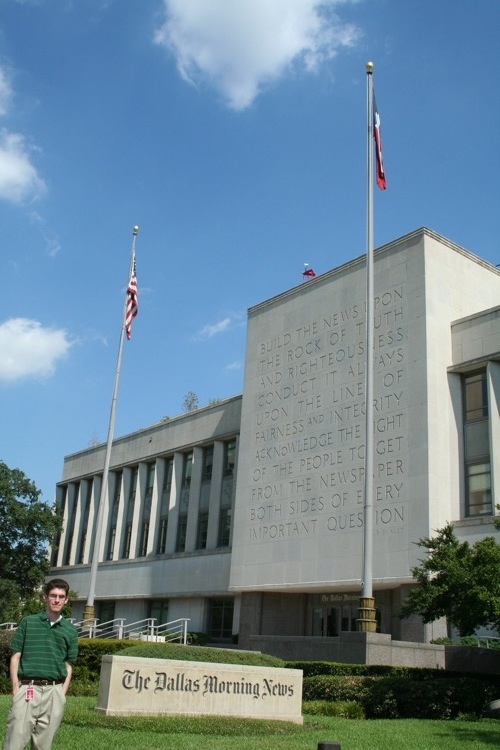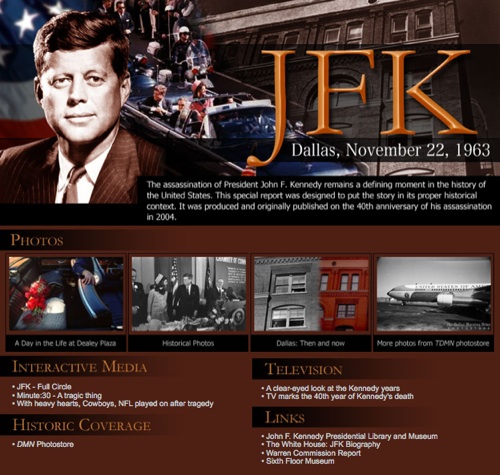I can’t believe my Dallas Morning News internship is more than half over. It’s been great so far, specifically because of the freedom and opportunities I’ve been afforded. Here’s are some highlights so far (Update: now with links!):

- Working on a newsroom social media strategy, best practices and how-to guide with Travis Hudson (more on this in a future post)
- Reporting, including a front page story on the DTV transition and following the story of an abandoned newborn
- Managing the Facebook page
- Occasionally managing the Twitter account
- Occasional online producing
- Worked with more than a dozen journalists, individually or in pairs, to better use social media tools like Twitter, Facebook, etc.
- Helped produce live coverage of American Idol audition coverage, working with another Web producer, reporters at the scene and managing community collaboration and contributions
- Contributing ideas to the interactive team, Problem Solver column and overall organization
And today I filmed a video for a feature, reporting alongside a another Web intern working on the article.
One of my backburner projects that’s now moving to the frontburner is re-imagining and rebuilding the DMN’s John F. Kennedy page.
I’ve been brainstorming and researching since before I arrived and, now that things are kicking into gear, I’d like your help and feedback.
For the first post in this series I’d like your thoughts about the following before hearing mine or anyone else’s ideas:

- Who is the audience/community?
- What is the purpose of this page/section?
- What story are is it telling?
- What’s the best way to tell the story?
- What content should be included? (More than 45 years later, we have loads of stories, obits, journalists’ accounts, photos, TV broadcasts, front pages, documents, etc.)
- What do you want to see when you first arrive?
- How do you want to navigate through this?
- With all of this, how can we engage people and foster quality conversations?
- How can we best integrate community content and comments?
- How can we best keep it dynamic and alive?
The first multimedia committee meeting for the project is Thursday Wednesday (July 29).
Know anyone who may have good insights? Pass it along! Many thanks in advance.
